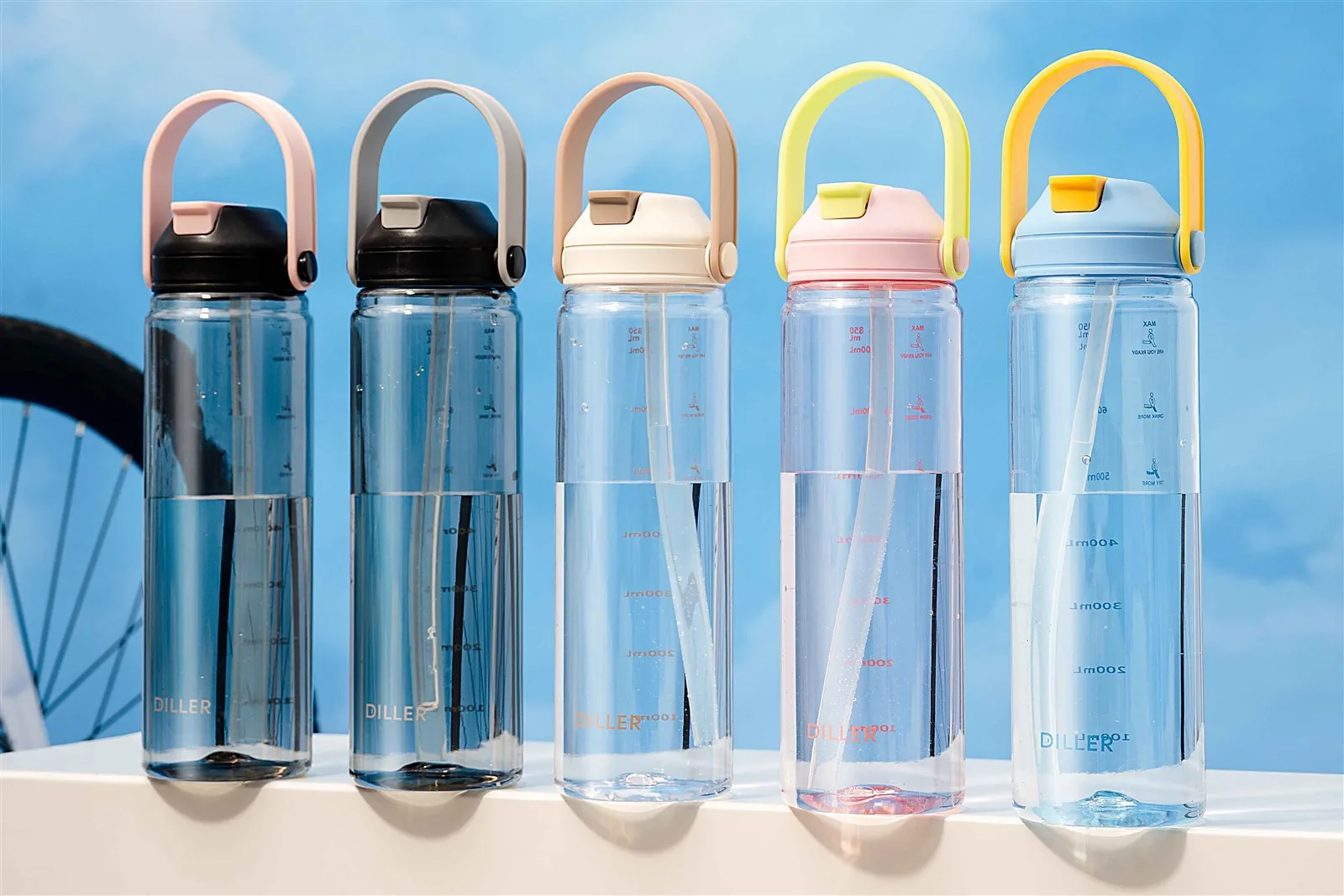달리기, 자전거 타기, 헬스장에서의 훈련 또는 야외 활동에 참여하든, 충분한 수분 공급을 유지하는 것은 중요합니다. 스포츠 애호가의 요구를 충족하기 위해 운동에 적합한 물병을 설계하는 것이 특히 중요합니다. 이러한 병은 휴대하기 쉽고 운동 중 수분 공급의 편의성과 효율성을 보장하기 위해 누수 방지 및 빠른 흐름 기능이 있어야 합니다. 이 기사에서는 소재 선택, 누수 방지 설계, 빠른 흐름 메커니즘, 인체공학적 디자인 등을 포함한 스포츠 물병의 특별한 디자인을 살펴봅니다.
I. 재료 선택
사용된 재료 스포츠 물병 가볍고, 내구성이 뛰어나고, 무독성이며, 환경 친화적이어야 합니다. 아래는 몇 가지 일반적인 재료의 비교입니다.
1. 스테인리스 스틸: 스테인리스 스틸 물병은 튼튼하고 내구성이 뛰어나며 충격과 낙하에 강합니다. 또한 스테인리스 스틸은 무독성이고 맛이 없어 수질에 영향을 미치지 않습니다. 또한 단열성이 뛰어나 장시간 야외 활동에 적합합니다.
2. 플라스틱: 플라스틱 물병은 가볍고 휴대하기 쉽습니다. 고품질 BPA 프리 플라스틱 병은 더 안전하고 단기 운동에 적합합니다. 그러나 내구성과 단열성이 상대적으로 떨어집니다.
3. 유리: 유리 물병은 유해 물질을 포함하지 않으며 물의 순도를 유지합니다. 그러나 깨지기 쉬워 스포츠 상황에서 사용하기에 제한이 있습니다. 많은 유리병에는 내구성을 높이기 위해 실리콘 슬리브가 장착되어 있습니다.
4. 실리콘: 실리콘 물병은 부드럽고 접을 수 있어 휴대하기 쉽고 하이킹이나 장거리 여행에 적합합니다. 그러나 실리콘 소재는 일반적으로 단열 성능이 좋지 않으며 뜨거운 물을 담기에 적합하지 않습니다.
II. 누수 방지 설계
누출 방지는 스포츠 물병을 설계하는 데 가장 중요한 측면 중 하나이며, 특히 고강도 운동 중이거나 물병을 휴대할 때 그렇습니다. 다음은 몇 가지 일반적인 누출 방지 설계입니다.
1. 나사 뚜껑 디자인: 나사 뚜껑은 나사산을 통해 병 입구에 단단히 고정되어 효과적으로 물 누출을 방지합니다. 고품질 나사 뚜껑에는 일반적으로 누출 방지 효과를 더욱 강화하기 위한 밀봉 개스킷이 함께 제공됩니다.
2. 푸시 버튼 메커니즘: 이 디자인은 뚜껑에 푸시 버튼이 있어 사용자가 간단히 눌러서 뚜껑을 열고 주둥이를 꺼낼 수 있습니다. 이 디자인은 한 손으로 조작하기에 편리하고 사용하지 않을 때는 자동으로 닫혀 누출을 방지합니다.
3. 노즐 디자인: 노즐이 있는 병은 일반적으로 실리콘 노즐을 사용하여 사용자가 노즐을 물어뜯어 마실 수 있습니다. 이 디자인은 편리하고 누출을 최소화하여 운동 중에 빠르게 수분을 공급합니다.
4. 프레스-락 디자인: 스포츠 병에서 흔히 볼 수 있는 이 디자인은 뚜껑에 프레스-락 메커니즘을 포함하고 있어 열고 닫기가 쉽습니다. 잠금 디자인은 누출을 방지하고 사용성을 향상시킵니다.
III. 빠른 흐름 메커니즘
운동 중에는 빠른 수분 공급이 필수적이어서 물병의 흐름 메커니즘 디자인이 중요합니다. 다음은 몇 가지 일반적인 빠른 흐름 디자인입니다.
1. 와이드 마우스: 와이드 마우스 디자인으로 물의 흐름이 더 매끄러워져 빠르게 마실 수 있습니다. 격렬한 운동 후, 사용자는 빠르게 수분을 보충할 수 있어 대기 시간이 줄어듭니다.
2. 빨대 디자인: 내부 빨대 디자인으로 사용자가 병을 기울이지 않고도 마실 수 있어 자세를 유지하는 것이 필수적인 사이클링과 같은 활동에 적합합니다. 이 디자인은 일반적으로 빨대와 함께 사용되어 원활한 물 흐름을 보장합니다.
3. 짜는 병: 플라스틱 병에서 흔히 볼 수 있는 이 병은 사용자가 병 몸체를 짜서 물이 빠르게 흐르도록 하여 빠른 수분 공급의 필요성을 충족할 수 있습니다. 이 디자인은 특히 달리기나 운동 중 짧은 휴식 시간에 유용합니다.
4. 프레스-플로우 디자인: 이 디자인은 사용자가 버튼을 눌러 물을 방출할 수 있게 하여 작동을 간소화하고 물의 흐름을 제어하여 낭비를 방지합니다. 다양한 운동 시나리오에 적합하며 고강도 운동 후 빠른 수분 공급을 제공합니다.
IV. 인체공학적 디자인
스포츠용 물병의 인체공학적 디자인도 마찬가지로 중요하며, 사용자의 편안함과 경험에 직접적인 영향을 미칩니다.
1. 인체공학적 병 모양: 병은 손에 편안하게 맞도록 디자인되어야 합니다. 많은 스포츠 병은 손가락을 위한 홈이 있는 유선형 모양을 가지고 있어 잡기 쉽고 미끄러짐을 방지합니다.
2. 미끄럼 방지 디자인: 운동 중 병이 미끄러지는 것을 방지하기 위해 외부에는 종종 미끄럼 방지 코팅이나 실리콘 슬리브가 있습니다. 이러한 디자인은 마찰을 증가시키고 병의 내구성을 개선합니다.
3. 무게 분배: 적절한 무게 분배는 한쪽 끝이 너무 무거워지는 불편함을 피합니다. 균형 잡힌 무게 분배는 특히 긴 운동 중에 휴대의 편안함을 높여 피로를 줄입니다.
4. 휴대성: 휴대성도 중요합니다. 많은 스포츠 병에는 링이나 스트랩이 있어 휴대하기 쉽습니다. 접이식 디자인은 사용하지 않을 때 공간을 절약하며 야외 활동에 이상적입니다.
디자인 과정 전반에 걸쳐 사용자 중심을 유지하고, 세부 사항에 주의를 기울이고, 지속적으로 최적화하여 스포츠 애호가의 요구를 진정으로 충족하는 제품을 만드는 것이 필수적입니다. 소재 선택이든 기능이든 모든 세부 사항은 시장에서 눈에 띄고 사용자의 인지도와 신뢰를 얻기 위해 세심하게 제작되어야 합니다.


